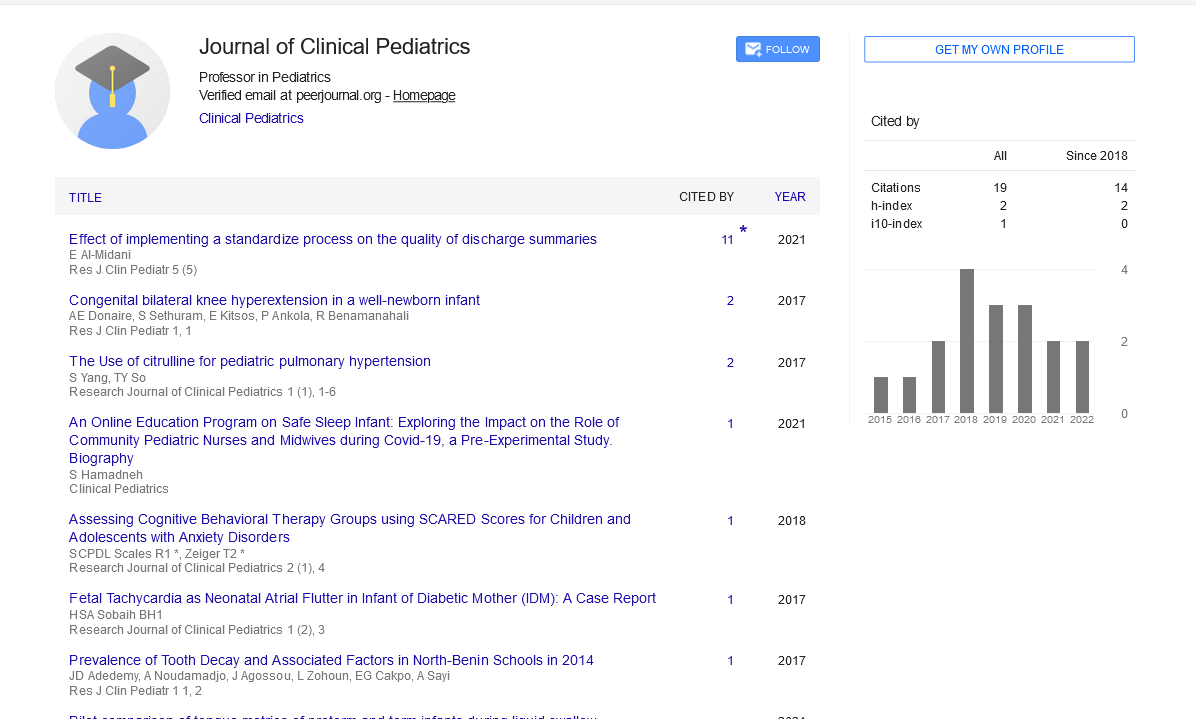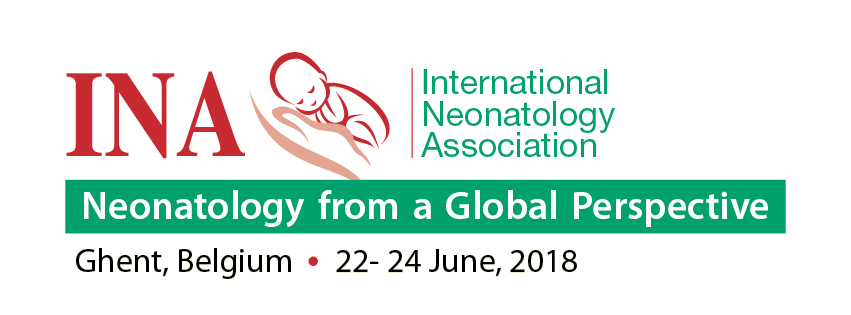Commentary, Res J Clin Pediatr Vol: 7 Issue: 2
Paediatric Pulmonary Medicine: Mechanisms and Therapies for Children's Respiratory Diseases
Karen Martin*
Department of Paediatrics, University of Groningen, Groningen, The Netherlands
*Corresponding Author: Karen Martin
Department of Paediatrics, University of
Groningen, Groningen, The Netherlands
E-mail: Karen_marten21@ugn.nl
Received date: 22 May, 2023, Manuscript No. RJCP-23-105512;
Editor assigned date: 25 May, 2023, PreQC No. RJCP-23-105512 (PQ);
Reviewed date: 08 June, 2023, QC No. RJCP-23-105512;
Revised date: 15 June, 2023, Manuscript No. RJCP-23-105512 (R);
Published date: 22 June, 2023, DOI: 10.4172/Rjcp.1000149
Citation: Martin K (2023) Pediatric Pulmonary Medicine: Mechanisms and Therapies for Children's Respiratory Diseases. Res J Clin Pediatr 7:2.
Description
Pediatric pulmonary medicine focuses on the study and treatment of respiratory diseases affecting children. With a deep understanding of the underlying mechanisms involved in these conditions, healthcare professionals are better equipped to develop effective therapeutic strategies. Pediatric respiratory diseases encompass a wide range of conditions, including asthma, cystic fibrosis, bronchiolitis, pneumonia, and congenital abnormalities. These diseases often result from a combination of genetic predisposition, environmental factors, and immune dysregulation. For instance, asthma involves chronic airway inflammation and bronchial hyper responsiveness triggered by allergens, pollutants, or viral infections.
In cystic fibrosis, a genetic defect affects the production of normal mucus, leading to thickened secretions in the lungs and other organs. Bronchiolitis, commonly caused by Respiratory Syncytial Virus (RSV), affects the small airways, resulting in inflammation and obstruction. Pneumonia, an infection of the lung tissue, can be caused by bacteria, viruses, or fungi. Congenital abnormalities, such as tracheomalacia or congenital diaphragmatic hernia, present with structural defects that compromise respiratory function.
In each respiratory disease, specific mechanisms contribute to the manifestation of symptoms. For instance, in asthma, exposure to allergens or irritants triggers an immune response characterized by eosinophilic infiltration, mast cell degranulation, and airway remodeling. This inflammation causes airway hyper responsiveness and narrowing, leading to wheezing, coughing, and shortness of breath.
In cystic fibrosis, the defective Cystic Fibrosis Transmembrane Conductance Regulator (CFTR) gene disrupts ion transport across epithelial cells, resulting in impaired mucociliary clearance and subsequent bacterial colonization. The thickened mucus obstructs the airways, leading to recurrent infections, progressive lung damage, and respiratory failure.
Bronchiolitis, primarily caused by RSV, leads to inflammation and necrosis of the bronchiolar epithelium. This results in increased mucus production, airway obstruction, and difficulty breathing, particularly in infants and young children.
Pneumonia occurs when pathogens invade the lung tissue, triggering an inflammatory response. Bacterial pneumonia is characterized by alveolar consolidation, while viral pneumonia often involves diffuse interstitial inflammation. In severe cases, respiratory distress syndrome can develop. Therapeutic strategies for pediatric respiratory diseases aim to alleviate symptoms, improve lung function, and prevent disease progression. Treatment plans are tailored to the specific condition and severity.
Pharmacological interventions play an essential role in managing pediatric respiratory diseases. In asthma, bronchodilators, corticosteroids, and leukotriene modifiers are used to reduce inflammation, dilate the airways, and control symptoms. Cystic fibrosis treatment involves airway clearance techniques, inhaled medications, and enzyme replacement therapy. Antibiotics are administered to control bacterial infections. For bronchiolitis, supportive care, such as hydration and oxygen therapy, is often sufficient, although in severe cases, antiviral medications or monoclonal antibodies may be considered. Pneumonia treatment depends on the causative agent, with antibiotics prescribed for bacterial infections and supportive care for viral pneumonia.
Non-pharmacological approaches also contribute to pediatric respiratory disease management. Pulmonary rehabilitation programs focus on physical therapy, exercise, and breathing techniques to enhance lung function and improve overall respiratory health. Nutritional support, including high-calorie diets and pancreatic enzyme replacement, is important for cystic fibrosis patients. Vaccination against respiratory pathogens, such as RSV and pneumococci, plays a vital role in preventing severe respiratory infections.
Conclusion
Pediatric pulmonary medicine plays a pivotal role in understanding the mechanisms underlying respiratory diseases in children. By unraveling the intricate processes involved, healthcare professionals can develop targeted therapeutic strategies to improve outcomes and enhance the quality of life for young patients. Pharmacological interventions, along with non-pharmacological approaches and supportive care, form the cornerstone of treatment. Ongoing studies and advancements in the field continue to provide insights into disease mechanisms, leading to the development of novel therapies. With a comprehensive and multidisciplinary approach, pediatric pulmonary medicine strives to alleviate symptoms, reduce disease progression, and empower children with respiratory conditions to lead healthy and fulfilling lives.
 Spanish
Spanish  Chinese
Chinese  Russian
Russian  German
German  French
French  Japanese
Japanese  Portuguese
Portuguese  Hindi
Hindi 
